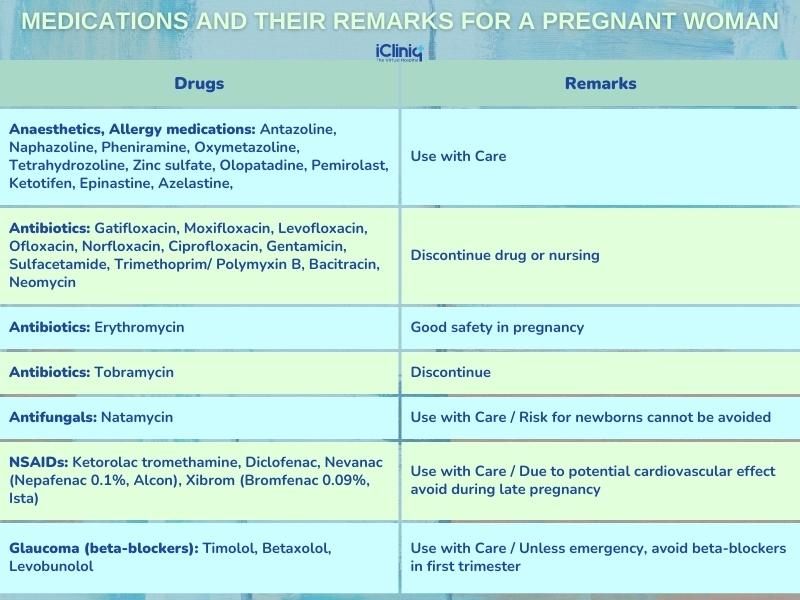Introduction:
There are many physiological changes seen associated with pregnancy. Additionally, sometimes some pathological changes are also seen associated with pregnancy. These changes play an essential role in the development and protection of the fetus. Moreover, these changes affect various organs and the systems of the body, such as cardiovascular, renal, pulmonary, metabolic, hematologic, endocrine, or visual systems. Especially ocular changes during pregnancy are mainly related to either physiological changes or pathological changes. Many of these changes resolve on their own after pregnancy, but some of them may cause irreversible effects on the mother’s vision.
What Are the Type of Ocular Surface Changes Seen During Pregnancy?
The following are the different ocular surface changes seen during pregnancy:
-
Physiological Changes:
-
Dry Eye: This condition is usually seen during pregnancy. However, the symptoms may resolve on their own after the delivery of the baby. The condition is majorly affected by dehydration as a result of nausea and vomiting or increased immune reaction leading to acinar cell destruction.
-
Treatment: Usually, it resolves on its own postpartum. However, symptoms of dry eye syndrome might need supporting medication such as lubricating drops for itchy and redness of eyes.
-
-
Decreased Corneal Sensitivity: This condition is usually very subtle, but at the end of the pregnancy, the condition may worsen. As a result of corneal edema (swelling), the thickness of the cornea increases. This may lead to refractive errors, such as decreased corneal sensitivity.
-
Myopic Shift: Myopic shift is caused by increased lens curvature. Due to this, mothers are usually not advised to avoid new prescription glasses or contact lenses, including refractive surgery, until after the delivery of the baby.
-
Krukenberg’s Spindle: This condition is seen during the first two trimesters of the pregnancy in the cornea of the mother by pigmented iris cells. However, the condition resolves on its own postpartum.
-
Decreased Intraocular Pressure: During pregnancy, the intraocular pressure decreases. There are many speculations behind this complication, such as an increase in the aqueous outflow, decreased episcleral venous pressure, or decreased scleral rigidity during pregnancy.
-
Changes in the Visual Field: The study suggests that during pregnancy, the pituitary gland grows. This physiological change can result in a bitemporal concentric visual field defect.
-
-
Pathological Changes:
-
Diabetic Retinopathy: Diabetes is the most common condition seen during pregnancy which might lead to diabetic retinopathy in mothers. During this condition, there is damage seen in the blood vessels of the retina, causing floaters, blurriness, or vision impairment.
-
Pre-eclampsia: Preeclampsia (a dangerous pregnancy complication characterized by high blood pressure) can affect vision in almost 30 to 100 percent of women and is the major factor affecting morbidity and mortality of mother and fetus. Other than blurry vision, the symptoms such as diplopia (double vision), photopsia (retinal damage resulting in flashes or presence of light), or scotoma (blind spots) are very rarely seen in pregnant women.
-
Treatment: This condition can be resolved after delivery. However, medications such as anticonvulsant drugs and antihypertensive drugs can be very effective.
-
-
Tumors:
-
Pituitary Adenomas: This is a pre-existing condition seen in mothers, where the past adenoma (benign tumor) regrows, causing many symptoms. These symptoms are headache, bitemporal defects, decreased visual acuity, or diplopia.
-
Meningioma: Due to estrogen and progesterone as mediators, the pre-existing meningioma (tumor arising from the meninges) might be seen regrowing during the second half of the pregnancy.
-
Grave’s Disease: Grave’s disease is the major reason behind hyperthyroidism in mothers. This condition is caused by a malfunction in the body’s immune system. There are chances of mothers having no symptoms during the rest of the pregnancy after its first appearance in the first trimester. However, there are chances of mothers getting symptoms during postpartum.
-
Toxoplasmosis: Toxoplasmosis (a parasitic infection) is commonly seen during the third trimester, where a baby gets infected by the mother during transplacental transmission. To treat this condition, intravitreal Clindamycin and Dexamethasone injections are a good choice.
-
Uveitis: Uveitis is the condition causing inflammation of the eyes, affecting the middle layer of an eye called the uvea. The symptoms of this condition include blurry vision, redness of the eyes, and pain in the eyes.
-
-
How to Manage Ocular Changes During Pregnancy?
Mothers’ bodies go through many changes during pregnancy, and to avoid any permanent damage to a sensitive organ such as the eye, they should take great care. Although many of the conditions resolve on their own during postpartum, pregnancy and ocular surface health can be managed by taking the following steps:
-
Mothers should make dietary changes as advised by their doctor. For instance, vitamin A-enriched foods, vegetables, foods rich in omega-3 fatty oil, and supplements can help mothers to meet their daily requirements.
-
Avoid carbonated drinks.
-
Avoid processed food.
Since the medication can cause many side effects on the mother and fetus, it should be taken with great care and with professional’s advise. Given below are some medications and their remarks that a pregnant woman should follow:

Conclusion:
It is pervasive to see ocular changes during pregnancy in women. It is essential to get regular checkups even if there are no significant symptoms during pregnancy. Also, it is more critical for ophthalmologists to be aware of all the pathology and physiology of the condition that a pregnant woman might face during pregnancy, along with differential diagnosis and management options. Responding to these changes on time can be a lifesaver for a mother and a newborn.












